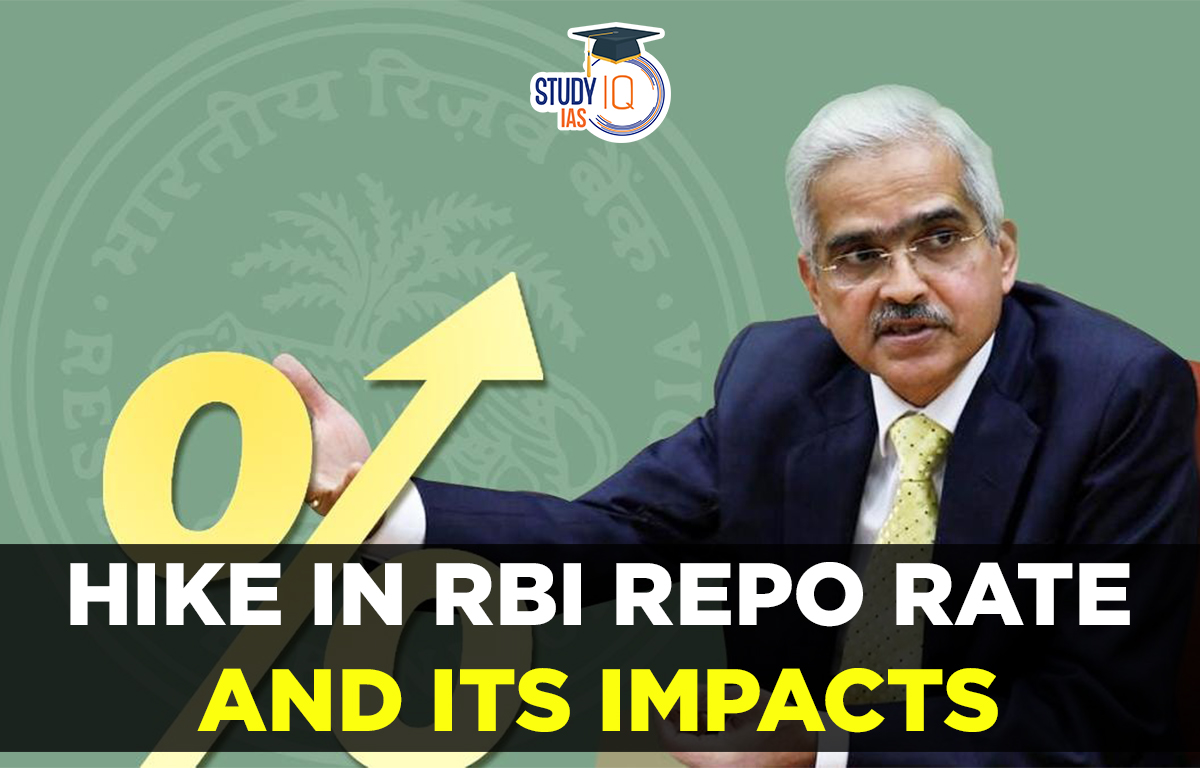Table of Contents
Context: The final meeting of the Monetary Policy Committee (MPC) for the financial year 2022-23 has concluded recently.
Key Outcome of the Meeting
- Repo Rate: The repo rate has increased by a cumulative 250 basis points (a basis point is one-hundredth of one percentage point) to 6.50 per cent since May 2022.
- Marginal Standing Facility (MSF): The MSF rate will stand revised at 6.75%.
- Standing deposit facility (SDF): SDF rate stands adjusted to 6%.
Monetary Policy Committee
- It is a statutory and institutionalized framework under the Reserve Bank of India Act, 1934, for maintaining price stability, while keeping in mind the objective of growth.
- The Governor of RBI is the ex-officio Chairman of the committee.
- The MPC determines the policy interest rate (repo rate) required to achieve the inflation target (4%).
- It was set up on the recommendations of the Urjit Patel committee in 2014.
Key Forecasts
- Growth projection
- The RBI has projected GDP growth for the next fiscal (FY2024) at 6.4 per cent.
- The MPC had slashed the GDP forecast for fiscal 2023 to 6.8 per cent from 7 earlier due to protracted geopolitical tensions, global slowdown and tightening of global financial conditions.
- Inflation forecast
- The central bank has lowered the inflation target for FY23 from 6.7 per cent to 6.5 per cent – which is still above the RBI’s target level of 4 per cent.
- Inflation is expected to be 5.3 per cent in FY24.
Possible Impacts of Increase in the Repo Rate
- Higher borrowing costs: An increase in repo rate can lead to higher interest rates on loans for consumers and businesses, making borrowing more expensive.
- Reduced borrowing: The higher cost of borrowing can reduce the demand for loans, leading to a decrease in borrowing and spending, which can slow down economic growth.
- Stronger currency: Higher interest rates can attract foreign investment, strengthening the local currency.
- Decreased inflation: Higher repo rates can curb inflation by making borrowing more expensive and reducing spending, which can help keep prices stable.
- Reduced economic growth: Higher interest rates can slow down economic growth by reducing the amount of money available for borrowing and spending.
Key Terms
- Policy Repo Rate:
- Repo rate is the rate at which the central bank of a country lends money to commercial banks in the event of any shortfall of funds by purchasing the security.
- Standing Deposit Facility (SDF):
- The SDF is a liquidity window through which the RBI will give banks an option to park excess liquidity with it.
- It is different from the reverse repo facility in that it does not require banks to provide collateral while parking funds.
- Marginal Standing Facility Rate:
- MSF is a window for scheduled banks to borrow overnight from the RBI in an emergency situation when interbank liquidity dries up completely.
- Under interbank lending, banks lend funds to one another for a specified term.
- Bank Rate:
- It is the rate charged by the RBI for lending funds to commercial banks without collateral.
- CRR:
- Under CRR (Cash Reserve Ratio), commercial banks have to hold a certain minimum amount of deposit (NDTL) as reserves with the central bank.
- SLR:
- Statutory Liquidity Ratio or SLR is the minimum percentage of deposits that a commercial bank has to maintain in the form of liquid cash, gold or other securities.


 Daily Quiz 25 April 2025
Daily Quiz 25 April 2025
 Linking Aadhaar with Voter ID Endangers ...
Linking Aadhaar with Voter ID Endangers ...
 UPSC Marks 2025 Out – Download UPSC Ma...
UPSC Marks 2025 Out – Download UPSC Ma...





















